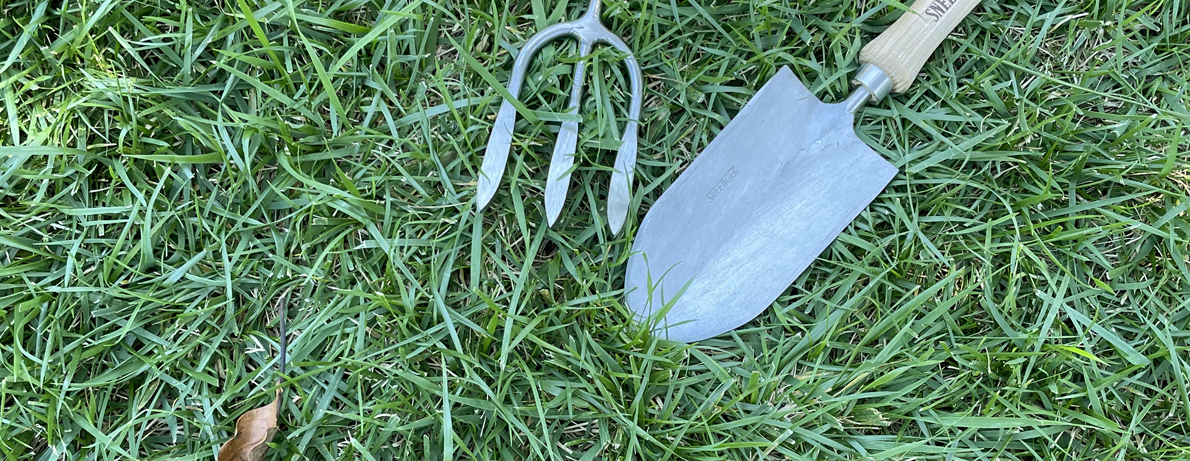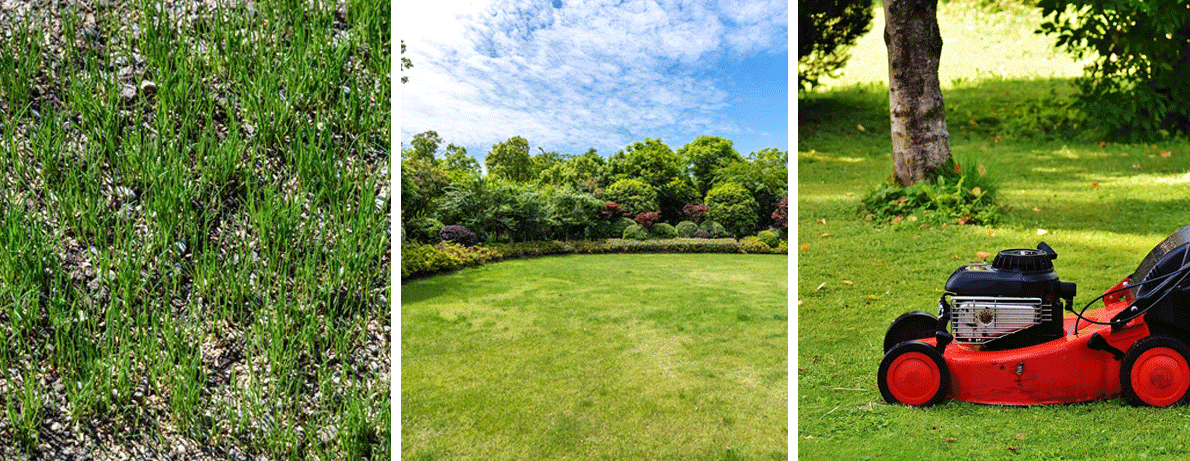Posted by Kelly Jean Reyland
4th Apr 2024
Caring for your lawn

Autumn is a prime time to get your lawn looking its best. There is still warmth in the air and soil and there is moisture available in the soil for optimal growing conditions.
If you are looking to sow a new lawn, now is the time! Get your seed spread as soon as possible before the winter cold halts growth.
Smooth out the soil so you have an even surface and remove any weeds. Your preparation now will affect the finished lawn. If you have time to leave the soil bare so any weeds seeds germinate and you can spray them off and remove them, do so. This helps to ensure your lawn will have less weeds competing with your lawn seed as it starts to grow. If you can repeat that process a few times it will be an even better final result, but you do need to get that seed growing so be as fast as you can with winter approaching.
If your soil is very sandy or heavy, spreading a layer of lawn soil is a good base to get the seeds started. You buy it bagged, it is weed free, has water holding crystals to help maintain an even soil moisture while seeds germinate, and it has some appropriate fertiliser. If you have an existing lawn and you have shallow dips that you need filled in to even out your lawn, lawn soil is an excellent option as it doesn’t settle at a lower level.
Choosing the right lawn seed mix for your situation is important to get the finished result you want. It is uncommon to get a lawn seed that is one single type of seed other than Kikuyu for very sandy situations or perhaps a Chewings Fescue for an ultrafine lawn.
Most seed blends have different combinations to give the finished attributes that you want in the lawn. Lawns where there are kids or dogs running around or vehicles driving on the lawn have a coarser blade of grass (such as brown top) which stands up to the wear and tear. If you have shady spots, a hot and dry situation, a desire for a super fine, trophy lawn or just a regular lawn, choose a mix that is suited for that purpose. These blends will generally grow strongly in the warmer months and very little over the cold months.
If you are in a situation where the lawn gets hard wear and tear all year round and has the potential to turn into a mud pit in winter, look for an all-season blend that grows during the cold months as well. It does mean you have to keep mowing your lawn in winter, but any damage has a chance to be repaired and the lawn regrows at any time of year. This is the blend they use on sports fields.
Once your lawn seed has germinated, ensure that you oversow to fill in any patchy areas and ensure a thick, even lawn.

Watering your lawn
Lawns can use up a lot of resources in terms of water, but there are a few things to keep in mind. Most people over irrigate their lawns which can cause plants in surrounding gardens to die from overwatering – especially on heavy or clay-based soil. Reduce your watering to a longer time and further apart rather than a light water every other day.
The finer the blade of grass the more water it requires, so if you want to reduce your water use over summer, oversow with a more drought resistant, coarser blade of grass and leave it cut higher during the summer months.
If your lawn is on an automatic watering system, regularly check if the soil needs watering. If the soil is damp, it's fine, it doesn't need more water. An automatic system can’t tell if it has rained, and if water is not needed. That’s up to you!
Mowing your lawn
The lower you cut your lawn, the higher the risk of damage or death over summer with high temperatures and minimal rain and the higher the risk of weed invasion. If you mow your lawn higher, it is more resilient to heat stress and there is more competition to keep weeds at bay. Maintain the blades on your mower and keep them sharp to ensure a clean cut of the grass.
Feeding your lawn
Be aware that a new lawn is very soft and easily burnt by fertiliser or weed spray so you need to use a fertiliser specifically for new lawns that will be slow release or use a gentle option such as liquid seaweed for the first six months.
What type of lawn fertiliser should I use? The three main options are slow release, granular and liquid. All have pros and cons.
Slow release options are expensive, however a little goes a long way and lasts a few months. As it releases slowly the grass is fed consistently over a long time and it is not wasted. Follow the application instructions to apply the correct amount to the correct area size.
Granular options are inexpensive but they can burn if they are applied too heavily. They also release on contact with water (this is why you need to water them in) which gives them a big feed at once but also has a high chance of leaching away and therefore be wasted.
Liquid feed is easily applied and taken up quickly – an instant boost – but it is also used up quickly, so it must be applied regularly over the growing season. It commonly has a weedkiller included in the formulation to kill off weeds and the fertiliser then encourages the grass to grow and fill the space.
For tips on weeding your lawn – see our blog on keeping your lawn weed free.
Our lawns are an important part of how our homes are presented and we use our spaces. Keeping them looking good and functioning well will make a positive difference in how we use them.
Browse some top Lawn Care products here!
Written for Gubba by Kelly Jean Reyland from Garden Advice NZ (www.gardenadvice.co.nz)


























